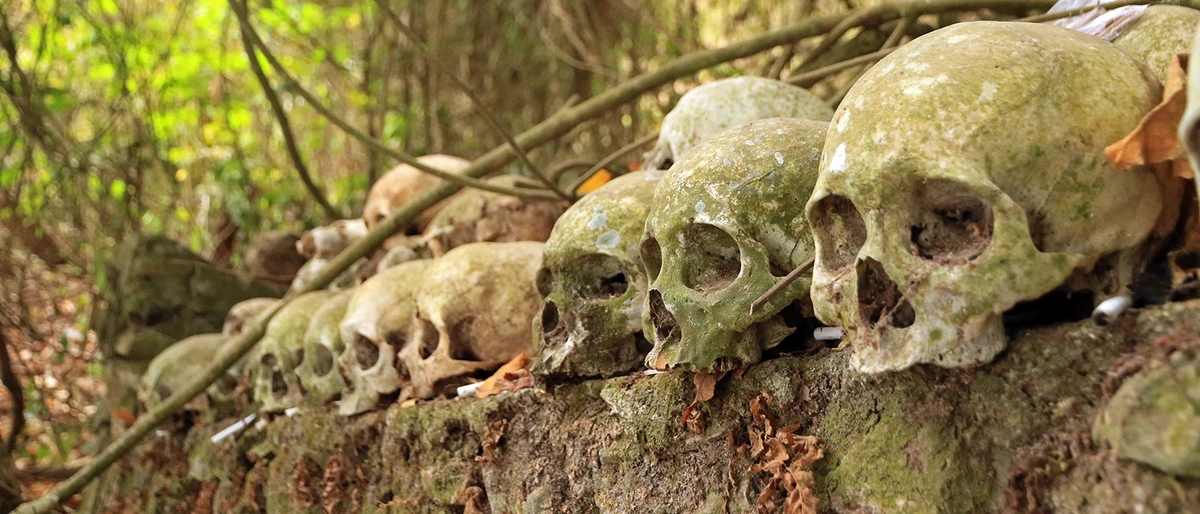Nestled between Lake Batur and the steep outer crater edge of Mt Batur, Bali’s most active volcano, the Bali Aga village of Trunyan is only accessible by boat. The close-by sub-village of Kuban features a mysterious cemetery which is the main tourist draw.
The ancient villages are inhabited by descendants of the first Balinese, who predate the Hindu Kingdom of Majapahit in the 16th century. Unlike everywhere else on the island, the local dead are not cremated or buried, but wrapped in cloth or pandanus mats and laid out in bamboo cages under a Menyan tree to decompose.
There are three cemeteries in Kuban, one for those who died of natural causes, one for those who died unnatural deaths, and one for infants. Most strangely, the decaying corpses do not produce any stench, which according to belief is due to the god who lives in the big tree that hangs over the cemetery. Others explain this phenomenon with the fact that the bad smell is absorbed by the perfumed scents of the Menyan tree.
Where to Go
- Kuban cemetery: dominated by a huge Menyan tree, this place is where the locals bring their dead to decompose.
Getting There
The village of Trunyan and the cemetery in Kuban are inaccessible except by one of the dozens of motorized boats waiting at the pier in Kedisan; the trip across the calm waters takes around half an hour. From Denpasar, it is a 2 to 2 hour, 30 minute drive to the northeast, along the main road through the Bangli regency to Penelokan (40 miles). From here, you head down the caldera to the lakeside and turn left to Kedisan.
Need to Know
- Worth it? Not necessarily, unless you have a passion for decomposing corpses.
- What to do: visit the cemetery in Kuban.
- Best time to go: during the dry season between April and October.
- How long? A day or less is sufficient to see the village and cemetery.
- Trivia: Trunyan and Kuban are ancient Bali Aga communities.
